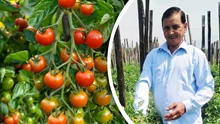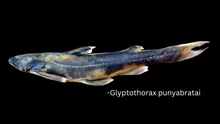
Due to the efforts of CSIR constituent laboratory, Institute of Himalayan Bioresource Technology or IHBT, Palampur, a historical shift in farming practices is in the offing with farmers of the remote Lahaul valley in Himachal Pradesh taking up cultivation of asafoetida (Heeng) to utilize vast expanses of waste land in the cold desert conditions of the region. CSIR-IHBT has brought in seeds of asafoetida & developed its agro-technology.
Interestingly, Asafoetida or heeng is one of the top condiments & is a high value spice crop in India. India imports around 1200 tonnes of raw asafoetida yearly from Afghanistan, Iran and Uzbekistan. It spends about 100 million USD per year.
In cultivation of this crop, lack of planting material of Ferula assa-foetida plants in India was a major bottleneck. The first seedling of heeng was planted by Director, CSIR-IHBT, Dr. Sanjay Kumar, on 15th October, 2020 at farmer’s field in village Kwaring of Lahaul valley to mark initiation of cultivation of asafoetida in India.
Since heeng is a major condiment in Indian cuisines, team CSIR-IHBT has made relentless efforts for introduction of it in the country. The institute has introduced six accessions of seeds from Iran through ICAR-National Bureau of Plant Genetic Resources (ICAR-NBPGR), New Delhi in October, 2018.
ICAR-NBPGR has confirmed that in the past 30 years, this has been the first attempt for introduction of asafoetida (Ferula assa-foetida) seeds in the country. CSIR-IHBT has raised the plants of asafoetida at CeHAB, Ribling, Lahaul & Spiti, H.P. under the vigil of NBPGR. This plant prefers cold & dry conditions for its growth. It takes around 5 years for the production of oleo-gum resin in its roots. Thus, cold desert areas of Indian Himalayan region are suitable for its cultivation.
Raw heeng is extracted from the fleshy roots of Ferula assa-foetida as an oleo-gum resin. Although, there are around 130 species of Ferula which are found in the world, but only Ferula assa-foetida is the economically important species used for the production of asafoetida.
We do not have Ferula assa-foetida, in India, but other species Ferula jaeschkeana is reported from the western Himalaya (Chamba, HP), and Ferula narthex from Kashmir and Ladakh, which are not the species that yield heeng.
Chief Minister of Himachal Pradesh has recognized the efforts of the Institute and announced the introduction & cultivation of Heeng in the state in his budget speech, on 6th March, 2020. Consequently, MoU between CSIR-IHBT and State Department of Agriculture, Himachal Pradesh was also signed on June 6, 2020 for a joint collaboration for the cultivation of asafoetida in the State. A capacity building program was also organized for officers of the State Department of Agriculture from 20th July – 22nd July, 2020 in which twelve officers from different districts of Himachal Pradesh has participated.
Adding to it, CSIR-IHBT scientists also organized training programs on heeng cultivation & laid out demonstration plots in villages of Madgran, Beeling and Keylong in Lahaul valley of Himachal Pradesh in collaboration with officers of State Agriculture Department for establishment of seed production chain and cultivation of heeng at commercial scale.











